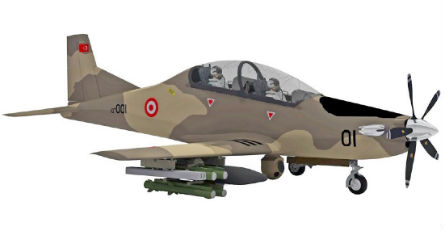Turkish Aerospace Industries (TAI) has rolled out its first manned aircraft design in Ankara, with the Hurkus trainer expected to make its flight debut in April 2013.
 |
|---|
Tolga Ozbek |
Launched in 2006 and supported by 27 Turkish companies, the $150 million Hurkus programme covers the manufacture of four prototypes - two flight-test examples and two aircraft for static testing.
TAI has worked on the design of three variants so far, including a civilian-targeted Hurkus A, a B-model military trainer and a C-variant close air support design.
Powered by a 1,600hp (1,180kW) Pratt & Whitney Canada PT-6 turboprop engine, the Hurkus is expected to reach a maximum cruise speed of 310kt (570km/h) and be capable of manoeuvring from +7g to -3.5g. Service ceiling will be 34,700ft (10,600m) and the Hurkus have a maximum endurance 4h and 15min.
TAI expects to secure certification for the Hurkus from the European Aviation Safety Agency by the end of 2015, following a flight test programme lasting 18-24 months.
A first production order could come from the Turkish air force, potentially in place of an option for 15 more locally-assembled Korea Aerospace Industries KT-1s.
The Turkish army has expressed interest in the Hurkus C to provide support for its attack helicopters.
The close air support version (below) will have a maximum weapons load of 3,300lb (1,500kg) and also carry a forward looking infrared (FLIR) sensor. As the Hurkus will capable of operating from unprepared runways, it could also attract export orders, TAI believes.
 |
|---|
Turkish Aerospace Industries |
TAI plans to offer another version of the Hurkus to support the Turkish coast guard's maritime patrol activities. The aircraft's back seat would be occupied by an operator for a FLIR sensor.
Source: Flight International



















